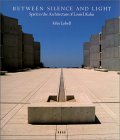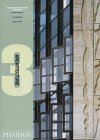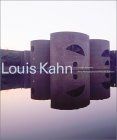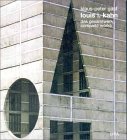The
Hidden Sphere
(of Artistic Concerns) Cecil Orion
Touchon

Between
Silence and Light : Spirit in the Architecture of Louis I. Kahn by
John Lobell
Kahn's words in this book are very wise. For just one example:
The reason a city might deserve to exist is not due to packing a lot of
warm squirming bodies into a small cubic footage, but rather to be a place
where persons can explore things that interest them beyond the requirements
of reproduction of individual and species life which determines peasant
(and other non-urban) life. A city is a place where a young person,
as they walk through it, observing various master craftspersons at work,
may find something they *want* to do for their whole life (not just something
they *have* to do to earn a "living"). This is remarkable stuff, especially
when we compare it with the ethical vapidity of postmodernism. Read this
book and then see how the "world" you live in and the architects who designed
it shapes up. Do you live in spaces which nurture creative human association?
Or do you live and work in "decorated sheds" that put sugar coating on
places that make you and your loved ones be banal?

Readings
from the Architecture of Louis I. Kahn by Jeffry Kieffer

Louis
I. Kahn : In the Realm of Architecture by David B. Brownlee, David
G. De Long, Elizabeth A. T. Smith (Designer)
Reviewer: A reader from Seattle, Washington, USA A beautiful book...It's
filled with so much information about Kahn's major projects. Interesting,
well-written text and dozens of sketches and model photos accompany each
major project. I'd never heard of Grant Mudford, but his big, color
photos are beautiful. There's a list of all of Kahn's projects and buildings
from the 1920s until his death in 1974, and a section of Kahn's travel
sketches and artwork. The pages are large, the print quality is impressive,
and the impeccable graphic design, by Massimo Vignelli with Abigail Sturges,
suits Kahn's style perfectly. And it's a good buy, too.

Twentieth-Century
Classics : Walter Gropius, Bauhaus, Dessau ; Le Corbusier, Unite D'Habitation,
Marseilles ; Louis I. Kahn, Salk Institute
Part of a series that aims to place buildings within their historical
context, this text considers Gropius' Dessau Bauhaus, Le Coubusier's Unite
de Habitation and Kahn's Salk Institute. It includes specially produced
technical drawings that explain how the buildings were detailed and put
together. The text explains how all three buildings are the product of
great social vision and humanism and that by studying these pivotal buildings
together, the approaches of three different architects to building for
specific communities can be examined.

Louis
Kahn by Joseph Rykwert, Roberto Schezen (Photographer)
From Publishers Weekly The architect of Yale University's clean-cut
Center for British Art, the graceful Kimbell Art Museum in Fort Worth,
Texas, the striking Indian Institute of Management in Ahmadabad, India,
and the diamond-shaped Erdmann Hall at Bryn Mawr College receives elegant
tribute in Louis Kahn by Joseph Rykwert, professor emeritus of architecture
at the University of Pennsylvania, with photographs by Roberto Schezen.
(The writer and photographer also teamed up for The Villa: From Ancient
to Modern.). After situating Kahn within the post-WWII modern social, artistic
and critical framework associated with Lewis Mumford, Rykwert turns his
attention to 15 specific projects, each of which is featured in about a
dozen pages of images accompanied by brief text. Architects and scholars
will rejoice in this learned, high-quality, large-format book. 185 illus.,
100 in full color.

Louis
I. Kahn : Completes Works by Klaus-Peter Gast
Book Description Louis Kahn (1901–1974) was one of the 20th century’s
most influential architects. His dramatic, often almost aggressively stark
buildings continue to inspire designers throughout the world. Based on
the latest research, this book provides an authoritative and clear overview
of Louis Kahn’s life and works.

Louis
I. Kahn: The Construction of the Kimbell Art Museum by Kahn, Louis
I Skira, Luca Bellinelli (Editor)
return
to index
|






